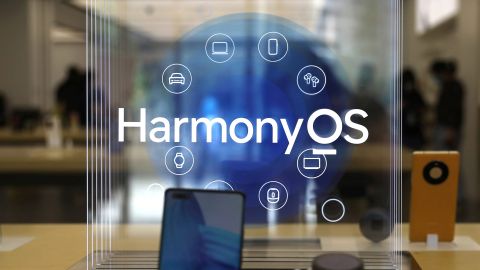Huawei's HarmonyOS 6 Sets the Stage for a AI Future with Intelligent Agent; CloudMatrix AI Infrastructure Update
In a bold step toward AI-powered autonomy and deeper ecosystem integration, Huawei has launched the developer beta of HarmonyOS 6.0 at HDC 2025. The rollout introduces a slate of cutting-edge features, most notably an Intelligent Agent Framework designed to elevate the native assistant, XiaoYi, from a passive voice tool to an intelligent, on-screen collaborator. With enhanced context awareness, seamless file-sharing via Touch and Share, and a next-generation CloudMatrix AI infrastructure, Huawei is doubling down on its vision of a sovereign digital environment. This release reinforces the company’s determination to lead in AI-native operating systems and cloud ecosystems untethered from U.S. tech dominance.
HarmonyOS 6.0 Ushers in Multi-Agent AI With HMAF
The centerpiece of HarmonyOS 6 is undoubtedly the Harmony Multi-Agent Framework (HMAF)—a sophisticated AI backbone that enables Harmony devices to process, learn, and interact in smarter, more human-like ways. Built for multi-agent collaboration, the framework empowers devices and services to interact with one another across Huawei’s ecosystem while reducing developer dependency on large foundational models.
Unlike conventional systems that rely on static voice commands, HMAF allows contextual awareness across multiple apps and devices. For instance, Huawei's voice assistant XiaoYi can now:
Scan smartphone screens and deliver contextual search results (akin to Google’s Circle to Search)
Use tools like ChatExcel to handle spreadsheet data via natural language chat
Help developers more efficiently build HarmonyOS-native applications
Developers no longer need to train massive AI models to leverage these tools, significantly lowering the entry barrier to smart application development. As a bonus, Huawei introduced "Code Flying Intelligent Body", a feature that can automatically generate HarmonyOS smart apps using simple prompts—effectively turning even non-technical users into app creators.
This is more than an upgrade; it’s a strategic play to democratize AI development within the Huawei ecosystem, making HarmonyOS a serious contender in post-app-store software architecture.
XiaoYi Evolves Into a Screen-Aware Intelligent Assistant
With HarmonyOS 6, XiaoYi sheds its identity as a conventional voice assistant and emerges as a permanent on-screen intelligent entity, powered by Huawei’s Pangu large language model. This transformation means XiaoYi is not just smarter—it’s intuitively helpful, anticipating user needs based on screen context.
Among XiaoYi’s standout capabilities:
Screen scanning to retrieve context-specific results
On-the-fly document and image analysis
Multi-step natural language planning and task execution
Cross-app assistance for HarmonyOS development
Spreadsheet interaction through ChatExcel
Integration with third-party AI platforms like DeepSeek for enhanced functionality
Unlike most voice assistants that depend on command-based triggers, XiaoYi reads between the lines—literally, scanning screen content and intuiting intent without explicit instruction.
This is a leap toward true zero-friction AI interactions, where digital assistants act proactively rather than reactively.
Touch and Share: Tap to Collaborate Across Devices
Another signature feature in HarmonyOS 6 is Touch and Share—a file transfer protocol that allows users to instantly share files between devices by tapping them together. It’s faster, more intuitive, and supports simultaneous sharing across multiple endpoints.
Use cases extend beyond file exchange:
Tap to invite friends into multiplayer gaming sessions
Tap to import video projects from PC to mobile for mobile editing
Bidirectional sharing between smartphones and PCs via apps like WPS Office
This near-instantaneous transfer system creates a mesh of device interactivity that blurs the lines between computing platforms. Whether it’s sharing documents during team meetings or sending game assets across screens, Huawei’s implementation positions Touch and Share as a practical, everyday tool for collaboration and content distribution.
CloudMatrix 384 and the Rise of AI Infrastructure Sovereignty
On the cloud side, Huawei debuted its CloudMatrix 384 AI rack architecture, a future-ready platform built to support the next wave of AI computing demands. Designed for performance and scale, this infrastructure anchors Huawei's transition to a fully sovereign AI and cloud ecosystem.
Key technical milestones include:
Support for Pangu 5.5, Huawei’s newest AI suite with:
718 billion parameters in its natural language processing model
15 billion parameters in its computer vision engine
Increased support for atomic services—small, install-free programs that enhance user experience with low-latency execution
The combination of HarmonyOS, CloudMatrix, and Huawei’s in-house LLMs signals a maturing AI stack that competes directly with Western offerings like Google's Gemini or OpenAI's GPT models—only now fully decoupled from U.S. cloud dependency.
These developments are as much about strategic autonomy as they are about performance. Huawei is building digital self-reliance not just in hardware, but across software, services, and cloud compute.
Developer-Centric Momentum: Growing the Harmony Ecosystem
With over 8 million registered developers and 30,000 applications already embedded within the HarmonyOS environment, Huawei is aggressively expanding its AI-native developer base. The integration of meta-services and app-less atomic programs offers a lightweight alternative to traditional app ecosystems, particularly useful in bandwidth-constrained or emerging markets.
This is Huawei's quiet but deliberate strategy to redefine the app economy—where intelligent microservices outperform traditional apps in speed, flexibility, and contextual relevance.
By eliminating the friction of installations and pairing that with XiaoYi’s cross-platform AI insight, HarmonyOS may have found a formula that sidesteps the very foundation of Android and iOS's app store dominance.
Strategic Takeaways: A Sovereign Future in the Making
HarmonyOS 6.0 is not a cosmetic upgrade—it’s a strategic inflection point in Huawei’s transformation from hardware OEM to AI infrastructure innovator. With the deployment of HMAF, a newly evolved XiaoYi, cross-device file-sharing, and cutting-edge AI architecture, the company is laying the groundwork for a cloud-independent, AI-first ecosystem.
Investor and enterprise implications:
Developers: Dramatically reduced AI development complexity via HMAF and app generators
Consumers: Intuitive, cross-device experiences through Touch and Share and XiaoYi
Governments and industries: Sovereign AI and cloud capabilities without U.S. reliance
Competitors: A signal that Huawei isn’t merely adapting to the AI wave—it’s shaping its direction
Huawei’s release of HarmonyOS 6.0 and its adjacent cloud AI infrastructure may not receive the same media attention as Western counterparts, but make no mistake—this is foundational tech development that will define the company’s place in the global digital hierarchy over the next decade.
